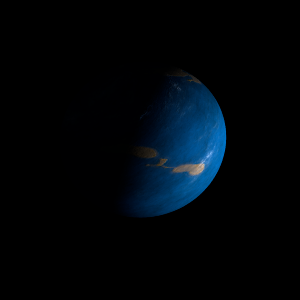|
|
Space Astro
|
Info for exoplanet "Medeia Culo"
| Scientific (actual) data |
|---|
| Name | Kepler-817 b |
| Planet status | Confirmed |
| Radius | 0.806 |
| Orbital period | 3.99011 |
| Discovered | 2016 |
| Updated | 2021-02-05 |
| Tconj | 2455190 |
| Publication | Announced on a website |
| Detection type | Primary Transit |
| Alternate names | 2MASS J19441964+3909418 b, K01323.01, KIC 4076098 b, KOI-1323 b, KOI-1323.01 |
| Star name | Kepler-817 |
| Right ascension | 296.08° |
| Declination | 39.16° |
| Mag j | 14.386 |
| Mag h | 14.025 |
| Mag k | 13.954 |
| Star distance | 1401 |
| Star metallicity | 0.02 |
| Star mass | 1.03 |
| Star radius | 1.03 |
| Star age | 3.55 |
| Star temperature | 5861 |
| Star alternate names | 2MASS J19441964+3909418, KIC 4076098, KOI-1323 |
| Wikipedia article | Kepler-817 b |
Back
| |
| Fictional info (?) |
|---|
| Suggested name | Medeia Culo |
| Planet type | Cold planet |
| Its orbital period around Kepler-817 of 4 earth days is the longest of all the planets in its solar system.
When viewed from Earth, this proximity to Kepler-817 means the planet can only be seen near the western or eastern horizon during the early evening or early morning.
Having almost no atmosphere to retain heat, it has surface temperatures that vary diurnally more than on any other planet in its solar system, ranging from 175°K (-98°C) at night to 420°K (147°C) during the day across the equatorial regions.
The atmospheric pressure at the planet's surface is 40 bar, or roughly the pressure found 1575 m under the oceans of Earth.
Because of its rapid rotation, the planet's shape is that of an oblate spheroid (it has a slight but noticeable bulge around the equator). |
| Atmosphere | Sulfur dioxide | 35% |
| Ozone | 23% |
| Ethane | 23% |
| 2H2O | 18% |
| Hydrogen peroxide | 0.054% |
| Argon | 6.7E-5% |
| Atmospheric pressure | 40 bar |
 |
| Moon | Deipidpsa Teus | Huge slightly egg-shaped ice moon |
| Perofari Julkal | Large almost round ice moon |
| Dysrok-anlikivi | Large potato shaped gaseous moon |
| Mircres Psa | Very small slightly egg-shaped gaseous moon |
| Chalthrymr | Large round gaseous moon |
| Dide Liaga | Huge round rocky moon |
| Hypro'aeto | Small round oceanic moon |
| Maerile'teus | Large round crater-filled moon |
| Rionre Ymircha | Huge irregular rocky comet |
| Belene Toherok | Medium-sized potato shaped gaseous moon |
| Cyllind Bosrebest | Very small round ice asteroid |
| Carpsa Rosa-pa | Medium-sized round rocky asteroid |
| Gaeon'sate Nand | Very small irregular crater-filled moon |
| Cubest Che | Medium-sized slightly egg-shaped rocky moon |
| Rosaska Fari | Large irregular ice asteroid |
| Praxpabest | Small irregular oceanic comet |
| Vospaaher-lis | Huge irregular rocky planetoid |
| Xilaoae Ait | Medium-sized round ice moon |
| Artheus | Large irregular gaseous moon |
| Google search for Medeia culo |
|
Website by Joachim Michaelis
|
|
|
|